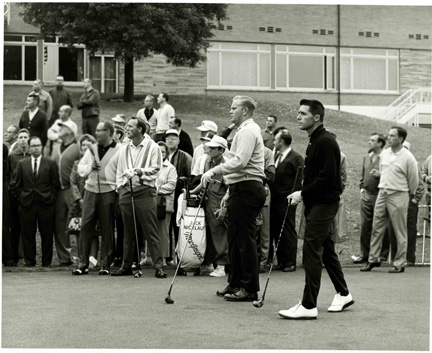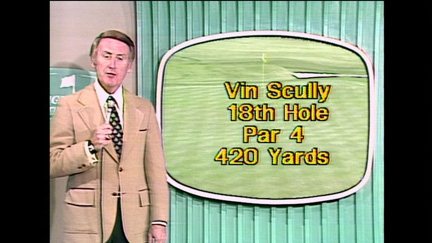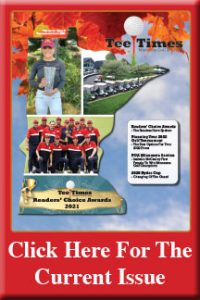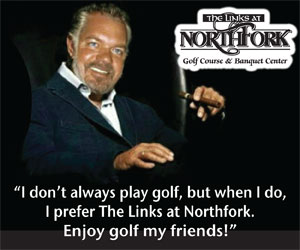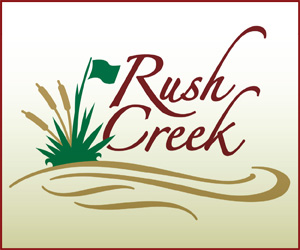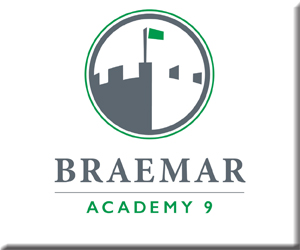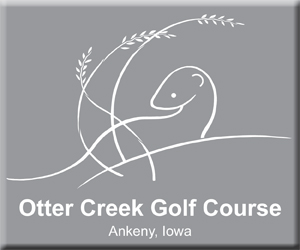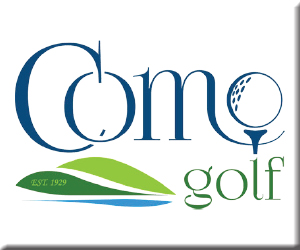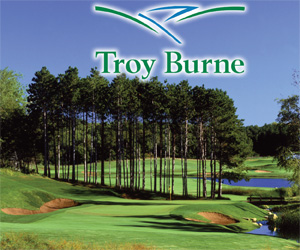Tee Times’ Time Machine – An Explosion
By Rhett Arens
The 1960’s was one of those decades in history that screams, “Look at me.” So many milestones… so many highs… so many lows. Political movements, cultural movements, musical movements, economic growth and right alongside the growth in all major sports was growth for the game of golf. To put it into perspective, golf in Minnesota grew during the 20 year period between 1960 and 1980 almost as much as it had in the first 80 years of its existence. By our count, about a 150 new courses launched during this period giving Minnesotan’s everywhere, in every corner of the state, a reasonable driving distance and easy access to a round of golf. The small towns and suburbs were now in the game.
Both private clubs and public courses were growing in popularity. The country clubs became private enclaves of recreation and family gatherings while the public courses ramped up rounds and became the workhorses of middle-class participation in what had shifted from a game of the elite to a game of the people. Such stalwarts of the Minnesota golf scene like Hazeltine, Braemar, Elk River, Whitefish, Bunker Hills, Majestic Oaks and Hidden Greens to name only a fraction of the list, gives you an idea of the range and type of courses added in the 60’s and 70’s. Work leagues, charity events, club tournaments, community fundraisers and casual recreation all contributed to the rapidly growing interest. Suppliers such as Ping, Wilson, Bridgestone and Titleist doubled down on advertising and suddenly the consumer was king.
One factor that undoubtedly contributed to the sharp rise in popularity during the 1960’s and early 70’s was the beginnings of the game’s first real media exposure and as a direct result – its first real superstars. It didn’t matter, B&W or color, there was now a TV in every living room. The dynamics and pace of golf broadcasting were perfect for creating a narrative around golf personalities. Long close-ups, reaction shots, voice-over-announcers, a clear beginning and end, all of these elements pulled viewers in. The on-air commentary also brought additional knowledge to the viewers, which in turn helped grow appreciation for the games nuances, confounding rules and playing protocol. Maybe there is room for some evolution in this area, but at least the viewers could understand it. Those superstars were enduring, they were competitive and to the surprise of many, quite athletic.
A short-list of superstars who developed into household names during these two decades is a who’s who of the game – Jack Nicklaus, Arnold Palmer, Gary Player and Lee Trevino. The wave of Minnesota golfers that were watching this first wave of media superstars and being motivated to develop into LPGA and PGA stars in their own right is impressive. With the exception of Patty Berg, whose career launched and had its unparalleled run prior to extensive television coverage, the following Minnesotan’s were no doubt influenced by the explosion of golf on TV; watching the superstars in the 1960s and 1970s:
Lee Janzen was born in Austin, MN and lived in Minnesota until age 12 when the family moved to Baltimore, MD. Lee had an outstanding PGA career with a total of eight PGA wins, the most notable being the 1993 and 1998 U.S. Opens. Yes, 2 majors and for most Minnesotans’ he remains under the radar.
Hillary Lunke who was born in Edina and still lives in Minnesota. The highlight so far of Hillary’s career was winning 2003 U.S. Women’s Open in an 18 hole playoff match against Kelly Robbins and Angela Stanford for her first, and so far only, LPGA win. Of special note is the fact that she was also the very first player to win the prestigious U.S. Open by advancing through local and sectional LPGA qualifying tournament wins.
Tim Herron who was born in Minneapolis and still resides in Minnesota. He continues to compete weekly on the PGA TOUR. In 1995 he started on the Nationwide Tour and the following season won his first PGA TOUR event at the Honda Classic. He won three times in his first four years, but there was a dip in his playing that resulted in a seven-year gap before finally winning his fourth PGA event at the 2006 Bank of America Colonial. His best finish in a major is a 6th-place finish in the 1999 U.S. Open.
John Harris was born in Minneapolis, grew up in northern Minnesota and still calls Minnesota home. John turned professional in 1976, then reverted to amateur in 1983 and again turned professional in 2002. His first win came in his fifth full PGA season at the 2006 Commerce Bank Championship.
Tom Lehman was born in Austin, MN. He enjoyed a prestigious collegiate career at the University of Minnesota and played extensively in both Asia and Europe. Today he is probably the most visible Minnesota player in golf industry circles and is still active on the PGA TOUR Champions schedule. Tom won the British Open in 1996 and that same year was PGA’s Player of the Year… perhaps the pinnacle of his success. Tom was also instrumental in helping the U.S. win the 1999 Ryder Cup. In 2010 he received the Payne Stewart Award, an award given to the player who shared Stewart’s respect for tradition, charity and who presented himself well through dress and conduct. Tom was and continues to be a consummate professional who has left his mark on course design and the states most prestigious tournaments. Tom has 5 PGA TOUR wins and 11 PGA TOUR Champions wins. Tom and his wife reside in the Scottsdale area today.
Of note during this surge in popularity period was the change in name of the St. Paul Open Invitational (ending its run of 9 years under that name) into the Minnesota Golf Classic. The Minnesota Golf Classic ran for four years between 1966 through 1969 and was hosted by Keller, Hazeltine and Braemer during those years.
Right in the middle of this period sits the most important Minnesota event of those two decades – the 1970 U.S. Open. It was held in June at Hazeltine National Golf Club to an enthusiastic, appreciative Minnesota audience. Tony Jacklin shot under-par in all four rounds and ended up winning by 7 strokes for his second of two major titles. He became the first England born champion since Cyril Walker in 1924 – quite a dry spell for the Brits. The event was critical to Minnesota golf history as it set the stage for Hazeltine to become a future major’s host site. Hazeltine National Golf Club would go on to host three more men’s Major events (1991, 2002 and 2009) in addition to the 2016 Ryder Cup. On the women’s side Hazletine hosted the 1977 U.S. Women’s Open Championship in July of that year. That event was won by Hollis Stacy by 2 strokes over runner-up and newly up-and-coming Nancy Lopez. It would be the first of three U.S. Open titles for Hollis to go with her 18 LPGA wins during an outstanding career.
It is very likely the courses you and I play today had their start during the 1960’s and 70’s. The game had arrived on everyone’s doorstep and exploded into the Minnesota sports consciousness. Despite the oil crisis driven economic upheavals of the 1970’s, and the global uncertainty hanging in the air, the game prospered, powered by the broad television exposure. Suddenly there were Arnold Palmer’s in every backyard mimicking their hero, fine tuning their swing mechanics and breaking windows in neighborhoods across the great golf state of Minnesota.
